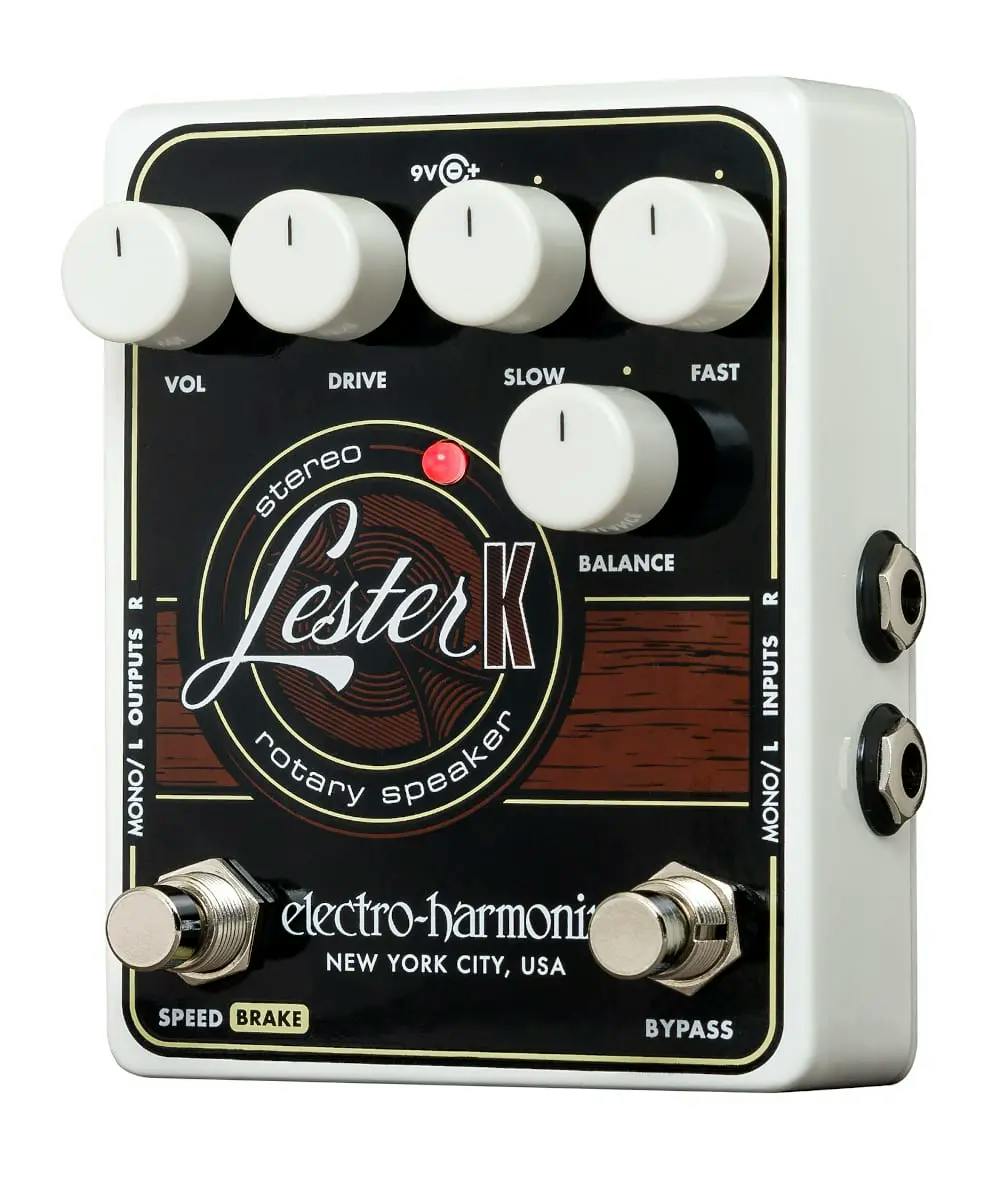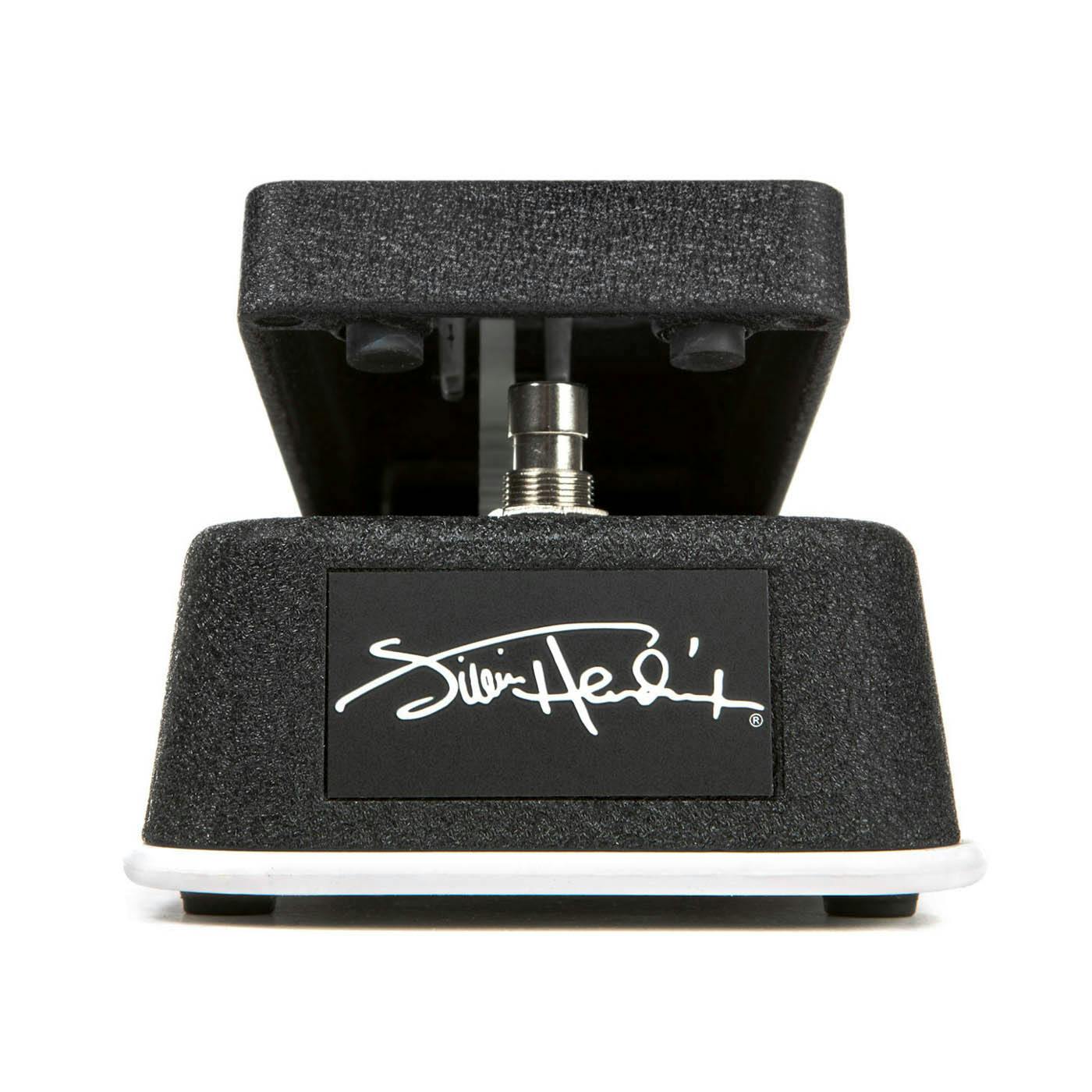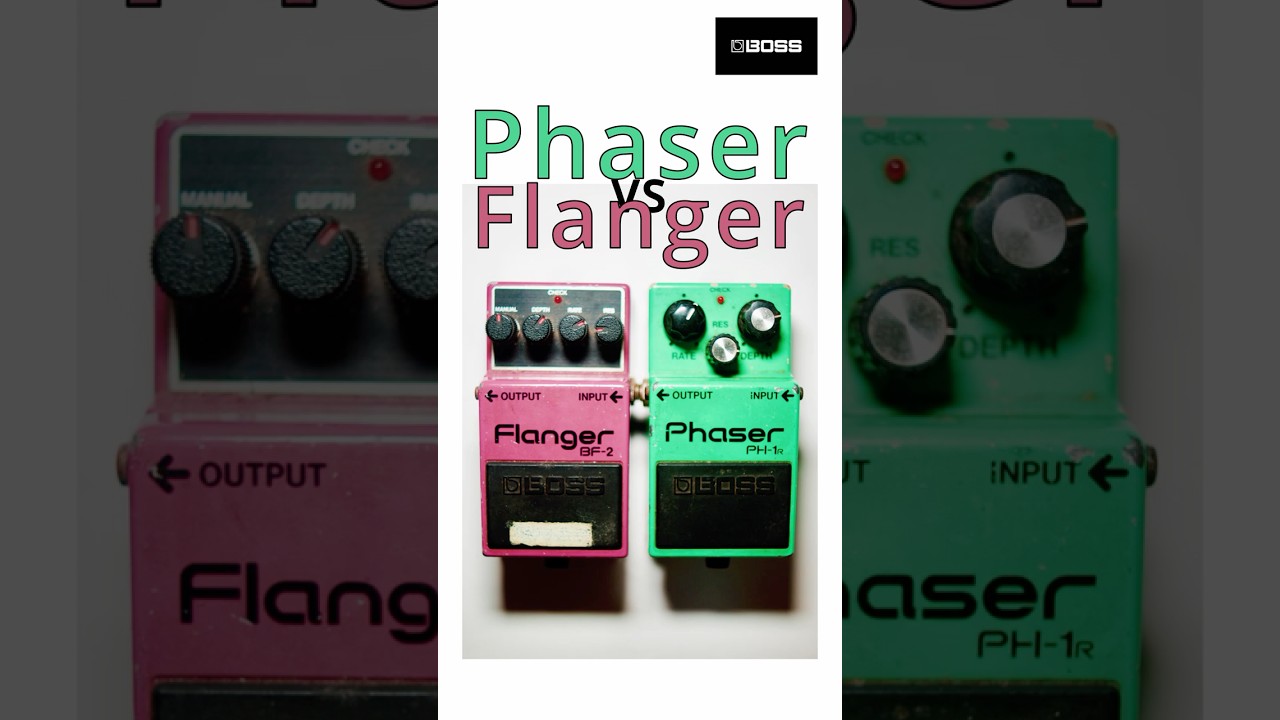Description
here at Just Pedals we love this Electro-Harmonix Lester K Stereo Rotary Speaker Emulator for Guitar.
Hendrix, Clapton, Harrison…. all lugged around the 150 poundsleslie speaker cab just to get the tone that Electro Harmonix have distilled into a pedal. You can now click on and off everything from very bright, funky rotary tones all the way through to dark and haunting “grungy” echos for your keyboard or guitar.
With 5 control dials and 2 buttons that control everything from drive to speed and accelaration this is a flexible, useful pedal that could quickly become a board must have for rigs across the genre’s.
So what sounds can I get?
If you’re playing anything with a prog rock or funk vibe the drive gives you some good high end push. There’s a really nice organ sound when you run a keyboard through it but it gives your guitar a classic rotary tone too.
Here’s what Electro-Harmonix have to say about this pedal
There’s nothing like the sound of a Leslie ® rotary speaker cabinet on guitar. That’s why legendary players like Jimi Hendrix, George Harrison, Eric Clapton and others have relied on the iconic effect. Now, for those looking to get that unmistakable sound with the convenience of a pedal, EHX introduces the Lester G: ultimate stereo rotary speaker emulator for guitar and Keyboard.
Specifications
- Lush rotary speaker emulation
- Stereo/mono in/out
- Tube emulated overdrive
- Adjustable Fast and Slow modes
- Classic rotary speaker speed up and down
- High quality buffered bypass
- Includes EHX9.6DC-200 PSU
- Dimensions in inches: 4.0 (w) x 4.75 (l) x 2.25 (h)
- Dimensions in mm: 102 (w) x 121 (l) x 89 (h)
We have new and used Electro Harmonix musical equipment available on our website for fast direct delivery from sellers across the UK & Europe.
Electro-Harmonix (EHX) is a legendary effects pedal company founded in 1968 by Mike Matthews, known for pioneering some of the most iconic sounds in music history. Based in New York City, EHX offers a vast range of pedals, from the classic Big Muff fuzz and Memory Man delay to innovative effects like the POG and Freeze. Renowned for their creativity, durability, and affordability, Electro-Harmonix pedals have shaped the tones of countless musicians across genres, from rock and punk to ambient and experimental music.
Just Pedals is a new Guitar Effect Pedals Marketplace – We feature new and used Guitar Effect pedals from different sellers, to purchase online from the UK.
A rotary effect simulates the sound of a rotating speaker, like the classic Leslie speaker, often used in organ amplification. It creates a swirling, moving sound by altering the pitch and volume of the signal in a way that mimics the rotation of the speaker’s horn. The rotary effect typically involves a combination of modulation and speed controls, letting you adjust the rate of the rotation and the intensity of the sound.
Rotary pedals can be used to add a dynamic, vibrant character to your tone, especially in genres like blues, rock, and jazz, where it’s used to create a lush, atmospheric effect. The sound often has a 3D, pulsating feel, making it ideal for creating a sense of movement and space within the music.
Stereo refers to a sound setup or effect that uses two channels (left and right) to create a sense of space and dimension in the audio. In a stereo configuration, sounds are panned across the left and right speakers or headphones, providing a more immersive and dynamic listening experience compared to mono, which uses only a single channel.
In the context of guitar pedals, a stereo pedal can output a signal to two separate channels, offering a broader soundstage and enhancing effects like delay, reverb, chorus, and panning. This allows for more complex and expansive soundscapes, with some pedals offering true stereo outputs to achieve rich, spatial effects that evolve across both channels. Popular stereo pedals include the Strymon Timeline, Eventide H9, and Electro-Harmonix Holy Grail Stereo, which all utilise stereo outputs to create rich, evolving tones that feel more immersive in a performance or recording setting.
Just the latest videos
Just related products
£5.99
9v 500mA Regulated, 2.1mm x 5.5mm, Centre Negative Polarity Power Supply Filtered for Zero Hum, Noise Free Operation Spring Mounted Tip for Secure Connection 2 Meter Rounded Thick Cable. Energy Efficient Designed for Musical Equipment
£245.51
Made in the USA True Bypass High quality product Hand orientation: ambidextrous
£230.98
Auto mode lets you capture and freeze notes and chords as you play, and sustain them indefinetely Controllabe glissando Effects Loop allows external effects to be inserted into the wet signal Latch Mode with layering feature allows stacking of sounds…
read more
£95.84
Guitar distortion Guitar Effects Guitars Our range is characterised by impeccable quality, workmanship and equipment. OUR PROMISE – We want you to be 100% satisfied. That's why we offer personalized customer service, 30-day money back guarantee and 3…
read more
£133.32
30 different speaker cab models,11 mic models, 4 power amp models Customizable EQ stage,Capable of loading custom IRS Store and recall up to 36 user presets Connect to PC editor via USB Supports headphones and lineout







































